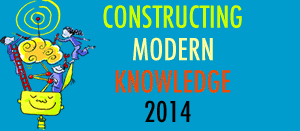There is a lot of love out there for Web 2.0 tools in schools that use “the Cloud”. This term means when someone else provides storage for your files online, or offers apps for creating products (like videos, online posters, or online presentations) that live completely online somewhere in cyberspace.

Cloud solutions can be lifesavers for teachers who are expected to turn a zero dollar software budget and antiquated network storage into amazing 21st century learning by students. But like any decision, there are tradeoffs.
Price - you gotta love “free”!
Many cloud apps are free, or operate on a “freemium” model. This means that there may be useful and wonderful features that are free, but you (and your students) may find it tiresome to be continually urged to purchase “points” or upgraded features. There is also no guarantee that what’s free today will remain free forever. Most companies eventually want to make money and they may decide to change their policies at times that aren’t convenient for you and your students.
Ads
The other way companies make money on free apps and unlimited storage is through advertising. Some sites offer educators ad-free options, or promise child-friendly advertising. This is not a guarantee, though, and a simple switch of ad providers could result in advertising that is not school appropriate — if there is ever such a thing.
Stability, or “Teacher, the cloud ate my homework!”
The “cloud” is great when it works. When it disappears for no reason, is down for maintenance the weekend before projects are due, or the website shuts down — there is often no support, no recourse, and typically no way to extract student work.
Age restrictions
Many cloud apps require users to be over 13 years old. It’s not that they are difficult to use, or even have some “adult” features to watch out for. This is simply a company deciding that they don’t want to deal with the rigorous federal laws concerning marketing to children under 13. It’s easier to just ask users to state that they are over 13 when they sign up. Teachers may be faced with a decision of whether to ask students to lie about their age to sign up - not a good model for students learning Internet safety and citizenship.
A site that asks for confirmation of age over 18 or asks for a credit card is a different story. This is an indication that there is adult material on the site.
Privacy and “social” features
Many cloud apps offer features like public galleries, commenting by the public, communication with other “members” of the website, or other features where members can access shared spaces. These features may not be apparent at first, or have complex settings that students must set. These apps should be evaluated carefully to see if they violate school policy and are worth it.
Your network speed and reliability
Using cloud apps depends on students being able to access the Internet in a reliable way. Some schools still struggle with inconsistent connectivity and speeds that are close to dial up. Things may work one day and not the next, or may work with 5 students but not 20. You won’t really know until you try, and the inconsistency can be even more exasperating when you constantly have to troubleshoot a moving target.
Your network settings
Some school networks have student access set up on a single account. This can cause havoc with cloud apps that assume that people are using personal computers with unique identities. I’ve seen workshops where suddenly one student is logged into someone else’s account and looking at their files. Not a happy moment.
Username and password-pallooza
Cloud apps often require logins and passwords for each student. If you use multiple apps, there will be a unique username and password for each student for each app. These pieces of vital information will have a different format for each app, some will ask for an email address as a username, the next will not. Some will require 6 characters, combinations of upper and lower case letters, numbers, different password configurations, etc.. It’s very inconsistent.
Some schools give students usernames and passwords that they can use for multiple accounts. If you do this, cover your bases by making them 8 characters long with a combination of upper and lower case letters, one punctuation mark, and at least one number. Not exactly easy to memorize, but at least the teacher can keep a list. And even then, be prepared for an app that doesn’t accept this combination.
Most adults don’t keep track of passwords, they let their browser or computer password application (like Keychain on the Mac) keep track of their passwords. But if your students are using shared computers without unique logins, they can’t rely on this. And if they can’t keep track of them, guess who has to?
Student Email
Some schools are still reluctant to give their students email addresses and access to email. Almost all cloud apps are going to need an email address attached to the account, if only to activate the account and retrieve lost passwords. Some teachers get around this by using their own email address, or creating special email addresses for students to use that all redirect back to their own account.
Besides being a hassle, it’s a bit ridiculous. Seriously - it’s 2011, time to get over this. If students need to use the cloud and can be trusted to manage this, it’s time to give them their own email addresses. Now, will they remember them? Who knows!
IT support (or lack thereof)
If the school IT department doesn’t support cloud apps and storage, a teacher may one day find that their cloud solution is blocked, or worse, no love from the IT staff when there are issues to solve. Some people ask permission, some for forgiveness - your mileage may vary.
Ease of use
Pro - Cloud apps are often easy to use and provide quick and easy ways to get work done.
Con - you wouldn’t think that “easy to use” could have a downside, but consider this. Some apps are easy to use because they have an extremely small feature set. For students, this means no way to become proficient at the kind of higher order thinking possible when using tools that require pre-production, editing, post-production, or fine tuning.
An app that requires one click to produce a result is a toy, not a tool. That said, I’m all for toys where appropriate, but this is a difference that’s worth the distinction.
What the cloud is best for…
- When there is no student-accessible network storage, the storage is unreliable, or the allocated space is so small it’s nearly worthless.
- When students do not have personal computers. It’s difficult to use shared computers to do real work when there is no guarantee that your files will be there the next time you use the computer (if you even get the same computer). This is especially true for longer-term projects and projects that require large files (like movies). When you have multiple students using one computer, you need to make sure that students can save their work somewhere. A flash drive is probably not going to cut it, even if the students remember to bring it and use it. The cloud may offer a solution, but it still means students will need to understand how to save and access their work.
- When you have robust Internet connectivity
- When students need to access files from multiple computers, multiple devices, and/or home computers. Using cloud apps like Evernote and Dropbox can be easy ways to get started with cloud storage.
- Using open-ended cloud apps and tools like wikis. Wikis can be an excellent way to collaborate on a project and there are no pre-set expectations for using the tool. It is what it is.
- When you have a back-up plan. Some cloud apps allow files to be downloaded and saved. If you can, do it to make sure you aren’t caught off guard.
- When the whole school or whole district is implementing a cloud-based solution. There is synergy in a group effort to use and learn a single tool, suite, storage solution, or application. There will be support, and opportunities for collaboration and sharing of best practices.
- When there is no hope of a software budget. This is a long term trap, however. Using free apps and cloud storage makes it seem that these items should be off the table forever. That may reinforce the perception that purchasing robust software and storage solutions aren’t really necessary. “Making do” is a both a blessing and a curse, and unfortunately, something teachers are increasingly expected to do.
So in the end, you can love the cloud and live by the cloud if you understand that its not a magic solution to all life’s problems. But really, what is?
Sylvia
Photo credit: D Sharon Pruitt



 I’m heading off tomorrow to
I’m heading off tomorrow to 
